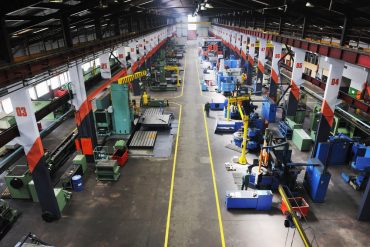
A real-time locating system and mobile software helped improve staffing efficiency for nurses at a Florida hospital.
Name of Organization: Florida Hospital Celebration Health
Industry: Healthcare
Location: Celebration, Fla. USA
Business Opportunity or Challenge:
Anyone who has been in distress in a hospital room or has had a loved in one that situation may understand the frustration of repeatedly hitting the buzzer for a nurse—and waiting for what it seems like forever for someone to help. Such delays are usually the result of short staffing in hospital facilities: Budgets are tight and doctors and nurses often have hectic schedules pushed beyond limits.
Nurses are crucial in any medical facility and they are often the most visible point of contact for patients. At the same time, nursing often carries the highest cost of labor in the health-care industry. Administrators of Florida Hospital Celebration Health, a 174-bed facility in central Florida, recognized that to advance patient care to the next level, they needed a way to open communication and improve awareness of staff location within the facility to better deploy nursing resources where and when they are needed.
How This Business Opportunity or Challenge was Met:
In 2011 Celebration Heath invested in a real-time locating system (RTLS) to better deploy its nurses. Building on an earlier project in real-time asset tracking and temperature and humidity monitoring, the hospital assigned tags and sensors to nurses and nursing stations to better understand and improve complex processes related to clinical workflow.
The hospital employed Stanley Healthcare’s AeroScout RTLS platform and MobileView software to track, analyze and enhance clinical workflow. This investment has been accompanied by proactive change management and communication to ensure that nurses understand and support process improvement initiatives. This initiative also was part of investments in RTLS asset management and environmental monitoring. Currently more than 120 nurses and techs are part of the workflow improvement initiative across the hospital.
“Tracking nursing patterns was not new for us,” notes Chief Nursing Officer Patty Jo Toor. “But we had been using manual methods for observation and data collection. With the advent of new reimbursement models and staff needing to work more efficiently, we saw a tremendous opportunity to use RTLS for ongoing research and process improvement.” The new system also served to help administrators study how nurses spent their time.
Measurable/Quantifiable and “Soft” Benefits from This Initiative:
By documenting travel patterns and time spent per location, administrators have been able to investigate specific aspects of nursing workflow, partnering with nursing staff to find new and better ways to optimize staffing levels, improve the efficiency of unit layout, and establish and implement best practices for compassionate, compliant nursing care. The redesigned workflows have helped Celebration Health raise hourly rounding compliance to greater than 90 percent, while also driving the separation rate for registered nurses to 8.57 percent, which is below the industry average.
Celebration Health has also started to understand and respond to the different dynamics of the day and night shifts. It has become clear to the hospital that, contrary to a widely held assumption, the night shift is just as busy as the day shift. The way it is busy, however, is very different. Activity on the day shift is more or less constant, whereas the night shift is characterized by periods of intense activity at the start and end of the shift, with a lull in between.
By shifting some activities to quieter hours, the hospital has helped reduce bottlenecks and addressed a point of dissatisfaction for the clinical staff. For example, it used to be routine to return IV pumps for sterilization at 6:00 am, just as patients were being prepared for discharge. Now, this task is performed earlier in the a.m. period, when technicians have fewer demands on their time.
Celebration Health follows a “purposeful rounding” practice, encouraging meaningful engagement between clinician and patient at every room visit. The data from the RTLS solution provides objective validation that this is in fact occurring. Hourly rounding compliance stands at 90 percent, and the length of time nurses are spending in patient rooms provides evidence that they are doing so with intent—and spending at least two to four minutes with the patient.
Lessons Learned:
Administrators worked closely with healthcare professionals to assure that the real-time location system would help them do their jobs better and was not a “Big Brother” implementation. The Celebration team found it valuable to monitor all events—not just clinical staff’s interaction with patients. This broader approach helped in uncovering some surprising results, including the findings related to different patterns in the night shift versus the day shift. Similarly, the data has shown the wide variation that can exist among patients.
Some patients are very satisfied with a relatively small amount of interaction with their nurses; others have greater needs and demand significantly more time from the nursing staff.
Since the implementation of RTLS for clinical workflow management, Celebration Health worked its way through a number of data-related issues. The key issue was to ensure the quality of the data that was being used for analysis and improvement initiatives.
Source: Stanley Healthcare
Want more? Check out our most-read content:
Research from Gartner: Real-Time Analytics with the Internet of Things
Goodbye Don Draper, Hello Big Data: An EMA Report on Modern Analytics
Becoming an ‘Always On’ Smart Business
Frontiers in Artificial Intelligence for the IoT: White Paper
Liked this article? Share it with your colleagues using the links below!





























